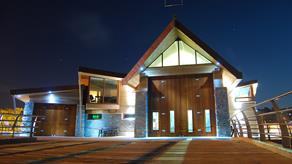

Environmental sustainability
The RNLI has committed to eliminating or reducing our negative impacts on the environment and to becoming a low-carbon, zero-waste-to-landfill and climate-resilient organisation in the future.
Our Environmental Policy will drive us to continue to achieve environmental improvements and savings across the organisation as we work toward our sustainability vision.
To help focus our environmental action we’ve set four specific environmental ambitions. We’re also working on climate change adaptation plans.
By 2024: Zero avoidable* single-use plastics
*'Avoidable' means where there’s an acceptable, available, and affordable alternative.This means that we need to identify where we are using, selling or sharing single-use plastics. Wherever we can, we need to change to a more environmentally and socially acceptable alternative. A few single-use plastics will be unavoidable – for example, those around medical items that are required to be sterile – but many can be avoided or replaced.
By 2030: Zero waste to landfill
This means that we need to understand the types and volumes of wastes we produce and try to eliminate, reduce, reuse, recycle or recover something back, before considering disposal to landfill.
By 2030, our ambition is to have found and implemented an alternative to landfill for all our own wastes.
By 2040: Zero carbon from road transport
This means that all our leased fleet and logistics vehicles will no longer be powered by fossil fuels and will, when in use, create zero carbon emissions.
By 2050: Zero carbon, Scope 1 and Scope 2
Scope 1 are direct emissions from burning gas and fuel. Scope 2 are indirect emissions from use of electricity.
This means that to mitigate our impacts on climate change, our use of energy and fuel which is currently electricity, gas and diesel or unleaded petrol will be reduced through efficiency measures and supplied through renewable or zero carbon sources. The RNLI will not use core funds to buy carbon offsets to achieve this.
Climate change adaptation
It is evident that climate change impacts are happening right now across the world and records are being broken every year. We’re increasingly experiencing hotter drier summers and drought, warmer wetter winters and flooding, ocean acidification, coastal erosion, more extreme weather events – and sea levels are predicted to rise. These all present real risks and challenges to our continued ability to safely save lives at sea, to the communities we serve and that our people live in and to the suppliers and partners we rely on. Over the next few years, to enable us to become more resilient and adapt to these changes, we’ll be working to develop our climate change adaptation plans.








